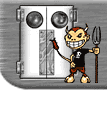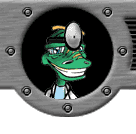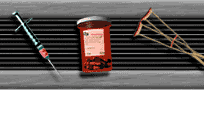P
|
Many girls enter pubescence.
A
fair number of youngsters will try substances that are illegal -
alcohol, gas sniffing, smoking, snuff, even hard drugs.
A
large number of children are also experimenting with sex.
The
push to seem adult and to try prohibited "adult" action leads to
an increase in accidents, and self inflicted injuries.
Children
who have not begun to develop adult bodies may feel anxious, upset.
The
11-year-old profile is very divergent. Girls are usually taller,
and the height and weight of a class is unusually varied - with
accompanying attention paid to this and strong emotional feelings
involved.
Menstruation
may catch a girl unaware and unprepared.
Blemishes
begin at this point for some youngsters and are often a source of
grief.
|
E
|
Industry
vs. Inferiority
This
age child is often filled with ambivalence. Change is a part of
the age and that can be very distressing for some youngsters.
Equally
unsettling may be a lack of change when peers are obviously changing.
It is a difficult path.
Hormones
provide some of the explanation for the mood swings and unsettled
feelings.
There
is a strong probability that the child has been or is choosing to
be exposed to much of adult life - including sex, drugs, illicit
life styles.
Obsessive-compulsive
behavior increases.
Hates
and loves are mercurial and may be consuming and as quickly forgotten.
Boy
craziness is common in girls.
The
child this age usually does a great deal of manipulating.
|
P
|
The child is still squarely involved in black and white reasoning.
There
is evidence of a concrete individualized perception of life.
There
may be a tension brewing between a desire to appear "good" and "white"
while wishing to be perceived by peers as acceptable and not a "goody".
This
is a vital time to explore choices and help the child steer through
peer pressure, overstimulation and offers which are beyond the child's
expertise and insight.
"Hero-worship"
is fairly common, and may take the folk hero or Rambo persona.
Questions
about religion, the nature of God and worship are often asked and
become more important.
|
S
|
Referent sources and relationships flip: **Toward adults: rude, disobedient,
resists limits, and famous refrains: "You let him do it" "Everybody
else does" "All my friends are" **Toward Peers: wants a best friend,
strong need approval, wants to be seen as "in the know" cool words
and profanity converse about sex, agrees to shoplift on a dare
Wears
clothes to identify with a group or image.
Often
acts more self assured than actually feels.
Acute
distress may occur if not able to socialize in the perceived valued
way.
May
act out for approval.
May
become upset if peers razz or defame them.
|
I
|
The child is still edging toward use of a formal operations paradigm.
Problem
solving may become more intentional and logical.
Students
begin to state that they know things when they may not be certain.
Frequently this is a signal that early adolescence is near.
Grades
and success are very important to the competitive student.
Students
who enjoy learning and school will become quite accomplished at
the educational skills and will exult in their abilities.
This
is a good time for cooperative learning techniques.
|
















